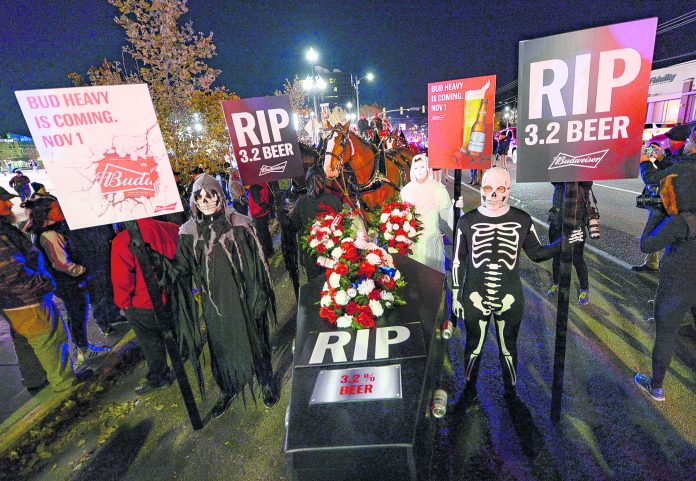
The first change to beer alcohol limits since the end of Prohibition nearly a century ago is coming to Utah.
The state will become the next-to-last in the country to say goodbye to lower-alcohol 3.2% beer on Friday, when drinkers welcome new, slightly stronger brews to grocery stores, gas stations and bars.
Lawmakers have raised the limits to a still-low 4% by weight, yielding as large breweries decided to stop making lower-alcohol suds for a market that’s shrinking amid changing laws. The change leaves Minnesota as the last state to have 3.2% beer.
Almost the entire country once had similar limits, said Maureen Ogle, author of “Ambitious Brew: A History of American Beer.” It was set by Congress to allow lighter brews to be made before the formal end of Prohibition in 1933.
“Frankly, it’s a very arbitrary number,” she said.
Still, most states used it as a guide as they made their own laws. That started to change in the 1980s with the beginnings of the craft beer movement and gained steam after the year 2000. The last few dominos fell with Oklahoma, Colorado and Kansas making the switch in recent years.
In the last remaining holdout, Minnesota Republican Sen. Karin Housley said she would “aggressively pursue legislation to modernize our state’s antiquated liquor laws” during the next legislative session.
In Utah, the state’s predominant religious faith, The Church of Jesus Christ of Latter-day Saints, teaches abstinence from alcohol and strict liquor laws continue to hold sway. Last year, lawmakers passed the lowest DUI threshold in the country at .05%.
This year, though, big retailers like Wal-Mart and others pushed for changes so they could keep their stores stocked with national beer brands. The new 4% limit, also measured as 5% by volume, was a compromise with the influential church, which had opposed going higher.
The deal left serious craft beer fans somewhat disappointed, but many drinkers are happy to welcome brands like Sam Adams and Firestone Walker in grocery stores for the first time, said Mike Riedel, who writes the Utah Beer Blog.
“I hope it’s not another 86 years before something else changes,” he said.
With some brands moving to private stores, Utah rules mean state-owned outlets may have to dump any 3.2% beer that isn’t sold by midnight Thursday. Customers have been snapping up those beers at bargain prices or gazing at empty shelves ready for the new stock.
For local brewers, the change has caused some headaches, but it will also allow them more creativity, said Nicole Dicou, executive director of the Utah Brewer’s Guild.
“We’re kind of reaching a new normal here in Utah,” she said. “We’re not going to be the ones left out of the national trends and conversations.”
The makers of national beers like Budweiser are marking the occasion with new marketing efforts in the state. The iconic Budweiser Clydesdale were in Salt Lake City this week to mark the occasion with a mock funeral, compete with life-sized coffin and costumed grim-reaper pallbearers walking the streets to cheers.q



















